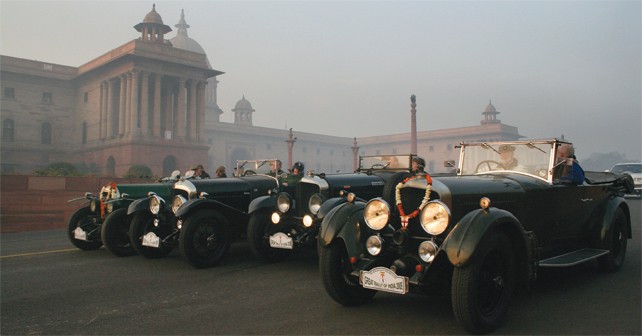
Jens feels today’s hot hatches, which are approaching supercar territory, are divorced from reality. Back in the 1970’s, the car market in Europe was easily understood. Many customers stuck to their brand for life – they moved up through the ranks from diminutive city cars to compacts, then to family sedans, and perhaps into the luxury segment. The bigger the car, the more powerful the engine – hierarchy mattered! When the Golf GTI launched in 1976, it was a downright provocation. Volkswagen had taken the light-weight, compact Golf, which was offered with 50 and 70 horsepower, and fitted the 110 horsepower engine from the much larger Audi 80 GTE. The result was a Golf that was able to hunt down much larger sedans – at the stop light, it embarrassed BMW and Mercedes sedans, even entry-level Porsches. Top speed was a full 182km/h. Disrespectful to traditional notions, the GTI cut through the established hierarchy – no wonder it soon acquired a cult following. A black GTI became the dernier cri in cities like Paris, London and Munich. Soon, other carmakers followed. Ford came out with the Escort XR3, and Opel launched the Kadett GTE. And the trend spread to a segment below. By the mid-eighties, the Fiat Uno Turbo, Peugeot 205 GTI, and Renault 5 Alpine Turbo easily climbed over the 100-horsepower marker. When compact hatchbacks became the base for rally cars, power and technology were boosted yet again. 16-valve engines and improved turbocharging technology pushed horsepower ratings close to 200 and beyond. The all-wheel drive Lancia Delta Integrale 16v epitomized the era, eventually scratching the 200 horsepower mark. By the late 1990’s, the trend was fading. Again, Volkswagen led the pack. The powerful Polo G40 remained without successor – and, in the Golf range, the GTI was relegated to the status of a trim level. It was the era of soft, organic design – of new mobility concepts – of the A-class and the Smart. The power play of a few years back was considered juvenile and obsolete. It took the industry a good decade to drag the hot hatch back into the light – and some companies still don’t get it. In Europe, Toyota doesn’t offer a single model that would qualify, and other Asian carmakers are woefully short of powerful small cars as well. In Germany, on the other hand, the hot hatch is back with a vengeance. The VW Golf R makes 300 horsepower from a 2.0 litre four; BMW’s M135i, with its 3.0 litre straight-six, is rated at 326 horsepower; the Mercedes-Benz A45 AMG cranks out a full 360 horsepower from 2.0 litres of displacement, and with the RS3 Sportback, rated at 367 horsepower from a 2.5 litre-five, Audi has just launched the new king of the segment. I’ve driven all of these cars, most recently the Audi RS3 Sportback – and I walked away deeply impressed. Riding on a 465-Newton Meter torque plateau that stretches from 1,625 to 5,550rpm, with maximum power delivered from 5,550 to 6,800rpm, it charges from zero to 100km/h in just 4.3 seconds and tops out at 250 or 280km/h – depending on the package chosen. Without a governor, it would scratch 290km/h. To put it into perspective, that is not only a universe away from the original GTI, it’s also faster than virtually any super sports car in the 1970’s and up to the mid-1980’s (the Italians were cheating on top speed). What’s more, the RS3 can easily be coaxed into oversteering – and it can be held in a drift with remarkable ease. The seven-speed dual-clutch automatic is quicker than any manual shifter – and the car is even comfortable enough for long-haul trips. Do I need to mention it’s fitted with every conceivable safety technology and assistance system? It’s almost a shame, therefore, that today’s hot hatches have reached a degree of perfection that makes it virtually impossible to enjoy them at halfway legal and sane velocities. Away from a closed circuit, you’ll find these high-powered beasts – which are constantly teasing you – to be as frustrating as they are competent. In other words, they are divorced from reality. Perhaps it’s time to start over again. I’d be all for a Datsun Go or a Tata Bolt with a sport suspension, performance tires, a crisp manual transmission, and an engine that helps achieve a power-to-weight ratio rivalling Germany’s out-of-touch hot hatches. A car like that would really cut through the hierarchy again.























Write your Comment